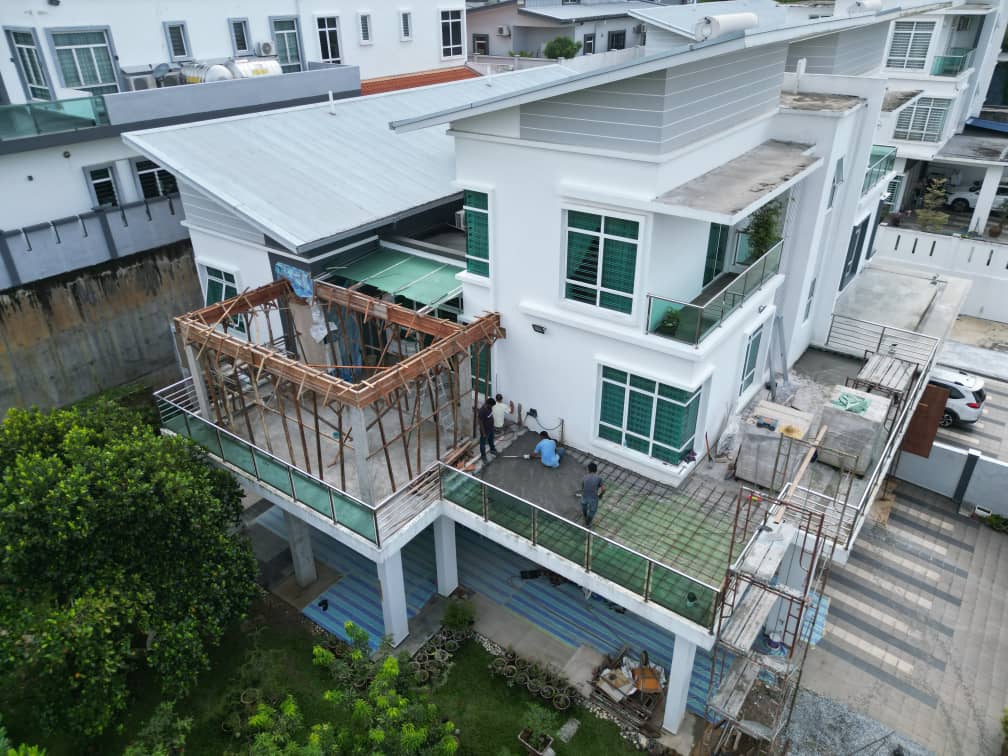
Building Renovation
Building renovation is the process of improving or updating an existing building to meet new standards, improve functionality, increase efficiency, or enhance its appearance. Renovation work can range from minor cosmetic upgrades to major structural changes, depending on the scope of the project.
Structural Upgrades
Building renovation work may involve upgrading the structure of the building to meet new safety codes or to accommodate new features or technology.
Plumbing and Electrical Upgrades
Renovation work may involve upgrading plumbing and electrical systems to improve efficiency and safety.
HVAC Upgrades
Renovation work may involve upgrading heating, ventilation, and air conditioning systems to improve energy efficiency and indoor air quality.
Interior Design
Renovation work may involve updating the interior design of the building to improve functionality or to create a more modern and attractive environment.
Exterior Upgrades
Renovation work may involve updating the exterior of the building to improve its appearance, energy efficiency, or durability.
Accessibility Upgrades
Renovation work may involve upgrading the building to improve accessibility for people with disabilities.
Tiles work
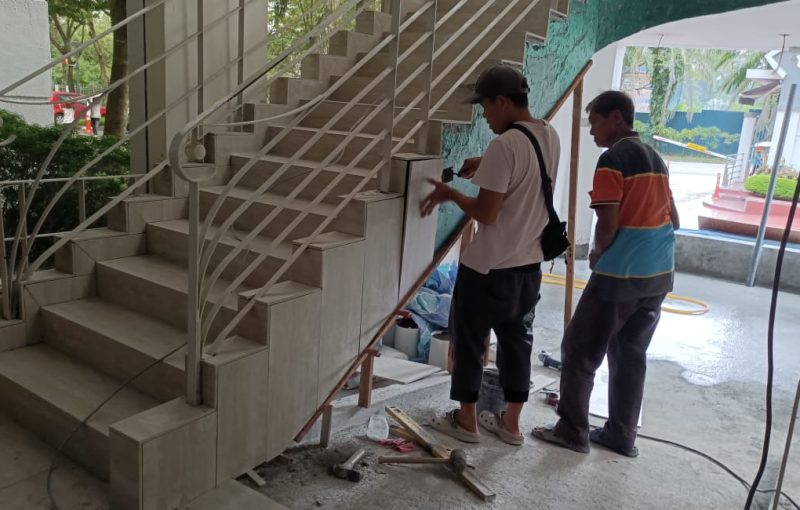
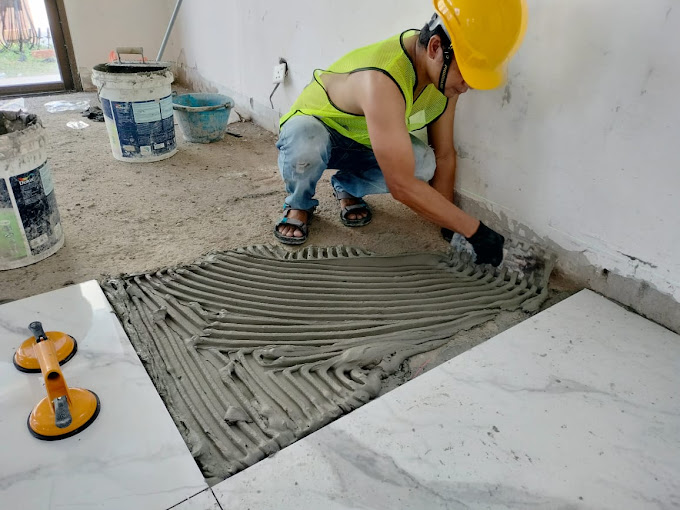
Tile work is a construction and finishing technique that involves the installation of tiles, which are thin, flat pieces of material often made from ceramic, porcelain, stone, glass, or other materials, onto surfaces such as floors, walls, and countertops. Tile work is widely used in residential, commercial, and industrial settings due to its durability, versatility, and aesthetic appeal.
Flooring
Residential: Tiles are commonly used for flooring in kitchens, bathrooms, entryways, and living areas. They are durable, easy to clean, and available in various styles to match different interior designs. Commercial: Tiles are used in commercial spaces such as offices, retail stores, hotels, and restaurants. They can withstand high foot traffic and are easy to maintain.
Bathroom Walls and Floors
Tiles are a popular choice for bathroom surfaces due to their water resistance. They are used on both walls and floors to create a clean and hygienic environment.
Kitchen Backsplashes
Tiled kitchen backsplashes protect walls from splashes and stains while adding a decorative element to the kitchen. Mosaic tiles are often used to create intricate designs.
Countertops
In kitchens and bathrooms, tiles can be used to create durable and heat-resistant countertops. Tiles made from materials like porcelain or granite are well-suited for this application.
Shower Enclosures
Tiled shower enclosures are not only functional but also visually appealing. Large-format tiles or decorative mosaic tiles are commonly used to create stunning shower designs.
Swimming Pools and Spas
Tiles are used to line the interior of swimming pools and spas. They are resistant to water and chemicals and come in various colors and patterns.
Outdoor Patios and Decks
Tiles designed for outdoor use are used to create attractive and low-maintenance patio and deck surfaces. They are resistant to weather and UV exposure.
Feature Walls
In both residential and commercial spaces, tiles are used to create feature walls, adding texture and visual interest. Bold patterns, textures, and colors can be used to make a statement.
Staircases and Entryways
Tiles are used to cover staircases and entryway steps, providing durability and enhancing the aesthetic appeal of these areas.
Exterior Cladding
Some modern buildings use large-format tiles as an exterior cladding material. These tiles offer weather resistance and a sleek, contemporary appearance.
Artistic Installations
In artistic and creative settings, tiles can be used for murals, mosaic art, and decorative patterns on walls and floors.
Industrial and Healthcare Settings
In industrial and healthcare facilities, specialized tiles with properties like anti-slip, chemical resistance, and antimicrobial features are used to meet specific functional requirements.
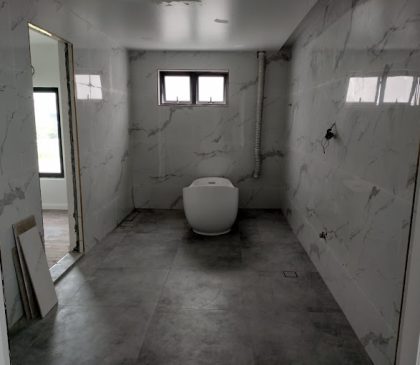

Tile work has a wide range of applications in construction and interior design due to its versatility, durability, and aesthetic appeal.
Concrete Rebar in Construction Industry
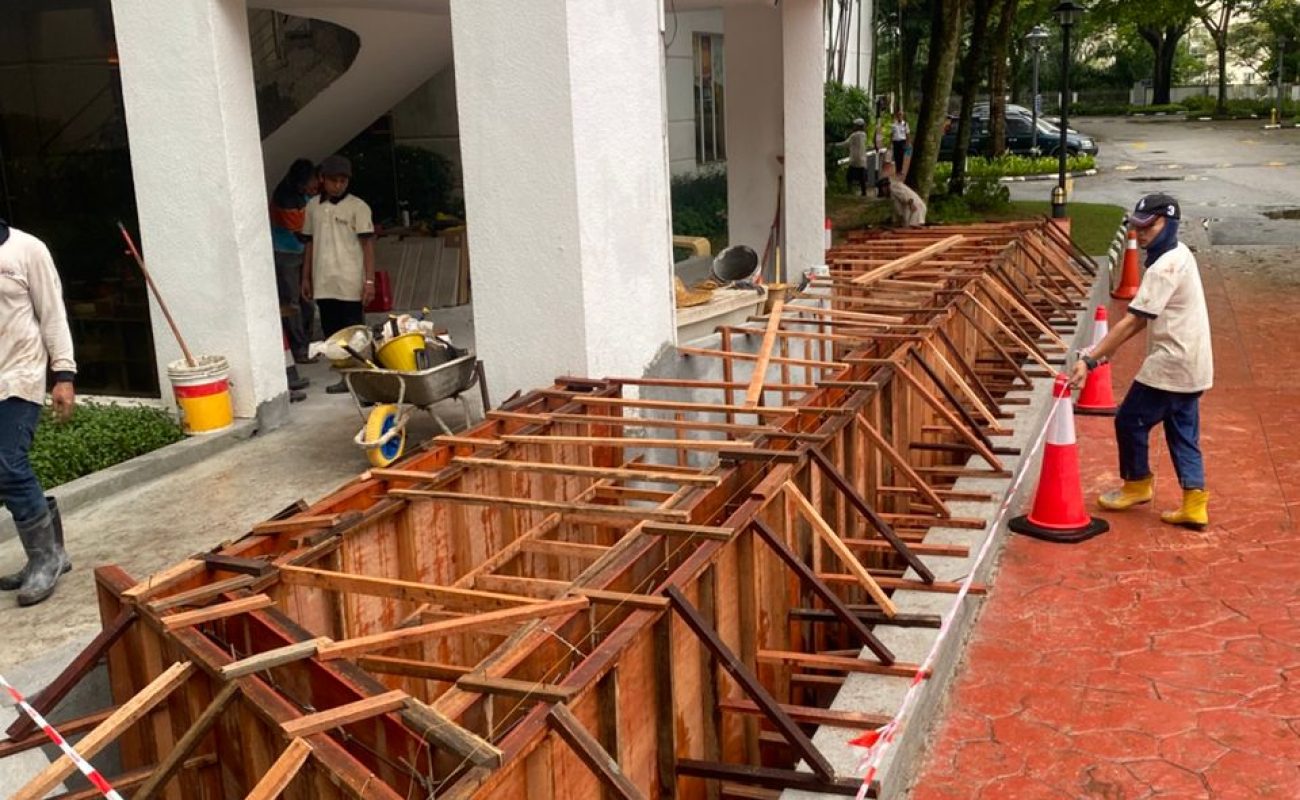
Importance of Concrete Rebar
Tensile Strength
Concrete is strong in compression but weak in tension. Rebar provides tensile strength to the concrete, preventing it from cracking and failing under tensile loads such as bending or stretching.
Crack Control
By reinforcing concrete with rebar, cracks that may develop due to temperature changes, shrinkage, or structural loads can be controlled and minimized.
Structural Integrity
In structural elements like beams, columns, and foundations, rebar ensures the integrity and load-bearing capacity of the structure. It helps distribute loads effectively.
Durability
Concrete rebar helps extend the lifespan of concrete structures by reducing the risk of deterioration and maintaining their structural integrity over time.
Corrosion Protection: To ensure the longevity of concrete rebar, measures are often taken to protect it from corrosion. This can include the use of corrosion-resistant coatings, epoxy-coated rebar, or stainless steel rebar.
Concrete rebar is a fundamental component in the construction industry, allowing for the creation of durable and reliable concrete structures. Proper design and installation of rebar are critical to ensuring the safety and longevity of concrete buildings and infrastructure.
Types of Concrete Rebar
Deformed Steel Bars
These are the most common type of concrete rebar. They have ridges or deformations on their surface to provide better adhesion between the steel and concrete. The deformations increase the bond strength between the two materials.
Plain (Smooth) Steel Bars
Plain steel bars are smooth without deformations. They are typically used in situations where the concrete is primarily under compression and minimal tensile strength is required.
Mesh or Welded Wire Fabric (WWF)
Instead of bars, WWF consists of a grid of interconnected steel wires, forming a mesh-like pattern. It is often used for flat concrete structures like slabs and sidewalks.
Brick Works Application
Brickwork is a construction technique that involves using bricks or similar masonry units to build walls, structures, and various architectural elements. Bricks are typically made from fired clay, though there are also concrete and other types of bricks available. Brickwork is a widely used construction method due to its durability, strength, and aesthetic appeal.
Residential Construction
Exterior Walls: Brick is commonly used for the construction of exterior walls in residential buildings. It provides a classic and durable facade. Interior Walls: Bricks can be used as interior partition walls, particularly in older homes where exposed brick adds character.
Commercial Construction
Office Buildings: Brickwork is used for both the exterior and interior walls of many office buildings, providing a professional and attractive appearance. Retail Spaces: Bricks are often used in retail stores and shopping centers to create a welcoming and aesthetically pleasing environment. Restaurants: Many restaurants use exposed brick walls to create a cozy and rustic ambiance.
Industrial Construction
Warehouses: Brickwork can be used for the construction of warehouse walls due to its strength and durability. Factory Buildings: In some cases, brickwork is employed for parts of factory structures, particularly where fire resistance is crucial.
Public and Institutional Buildings
Schools: Bricks are commonly used in the construction of school buildings for their durability and low maintenance requirements. Government Buildings: Many government buildings feature brick exteriors due to their longevity and timeless appearance.
Garden Walls and Landscaping
Retaining Walls: Brickwork is used to create retaining walls in landscaping to hold back soil and provide structural support. Garden Borders: Bricks can be used to define garden borders and create raised flower beds.
Fencing and Boundary Walls
Privacy Walls: Brickwork is employed to create privacy walls and boundary walls around residential properties. Decorative Fencing: Bricks can be used to create decorative fencing in gardens and public spaces.
Pavements and Walkways
Paving Bricks: Specialized brick pavers are used for creating driveways, walkways, patios, and other outdoor surfaces.
Artistic and Decorative Applications
Mosaic and Artwork: Bricks can be used for creating decorative mosaics and artwork both indoors and outdoors.
Advantages of Brickworks
- No Fluctuate temperature
- Durable
- Corrosion resistant
- Constant Humidity
- Fire resistant
- Save Energy
- Termite resistant
Types of Bricks
- Clay brick
- Cement Brick
- Sand-lime brick
- Fly Ash brick
- Engineering brick
Contact us for professional brickworks for you
External Wall Render
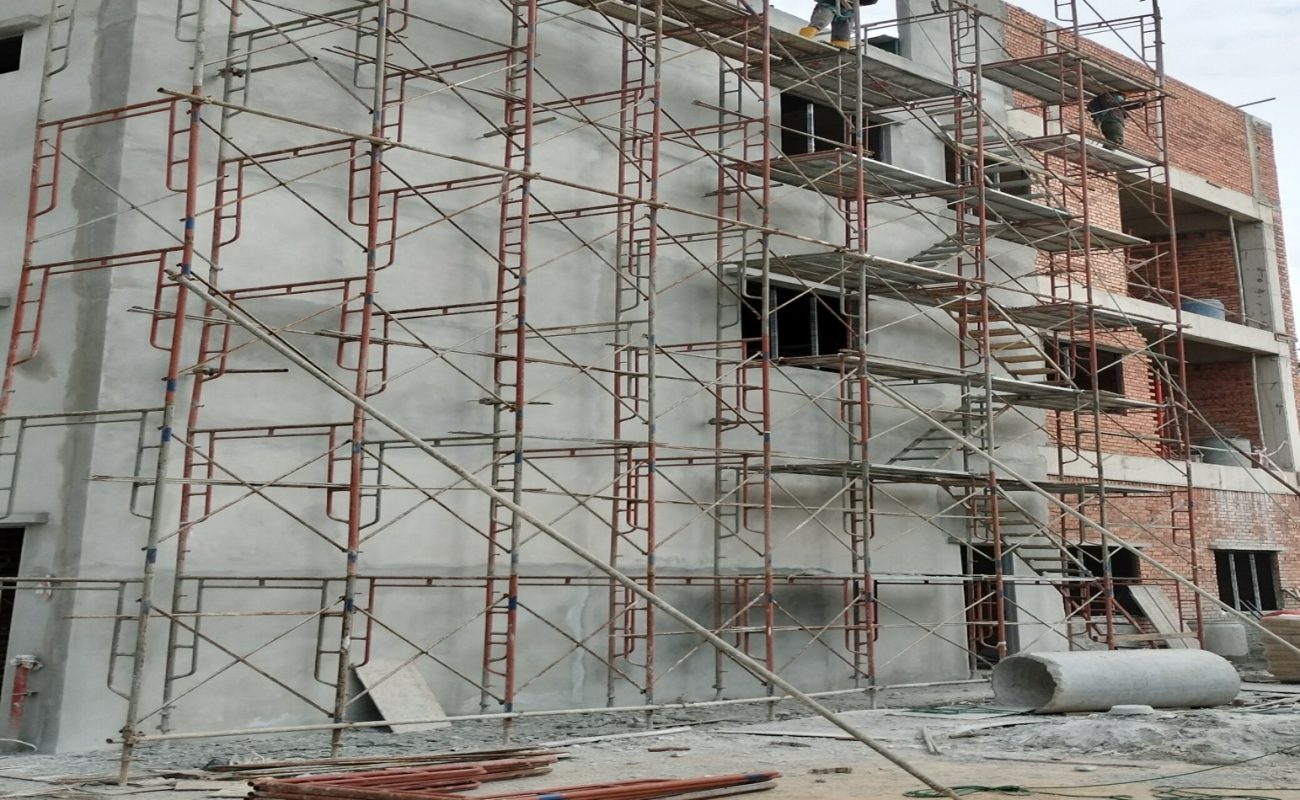
External wall render is a construction technique used to improve the appearance and weather resistance of exterior walls. It involves applying a layer of a cementitious or polymer-based material to the outer surface of a building’s walls. This layer, known as render or stucco, serves several purposes.
Weatherproofing
Render provides a protective barrier against moisture, rain, and wind, preventing water from penetrating the walls and causing damage.
Aesthetic Enhancement
Render can significantly improve the visual appeal of a building. It comes in various colors and textures, allowing for customization to match the desired architectural style or design.
Structural Support
The construction management team develops and maintains a detailed project schedule that outlines the timeline for each phase of the construction process. They monitor progress and make adjustments as necessary to ensure that the project is completed on time.
Insulation
Depending on the type of render used, it can offer some degree of thermal insulation to improve a building's energy efficiency.
Plastering & Skim Coat
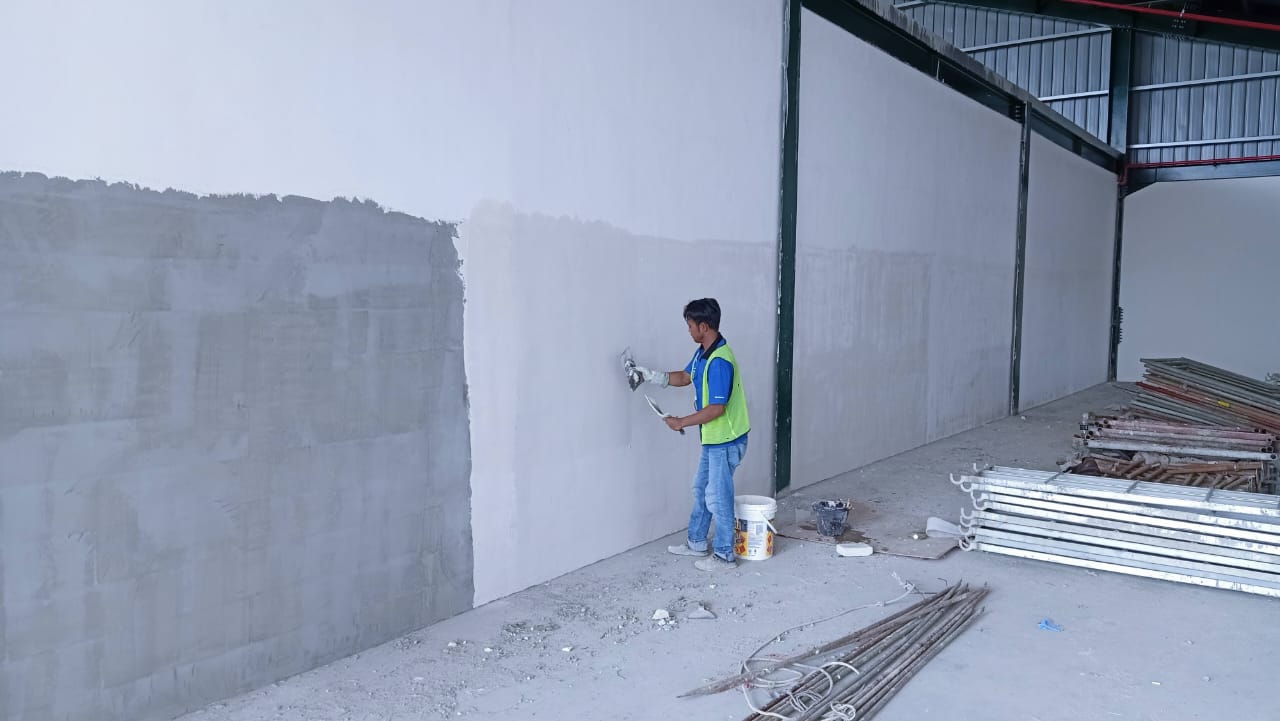
Wall Surface Smoothing
One of the most common uses of skim coating is to smooth out uneven or textured wall surfaces. This is often necessary when removing wallpaper or covering surfaces with a heavy texture, like popcorn ceilings. Skim coating creates a clean, flat surface that's ideal for painting or applying new wallpaper.
Repairing Damaged Surfaces
Skim coating is an effective method for repairing walls or ceilings with minor cracks, dents, or holes. The skim coat material can be applied over these imperfections to create a seamless and like-new surface.
Covering Imperfections
It's used to hide imperfections and irregularities in existing plaster or drywall surfaces, such as uneven joint lines, tape seams, or trowel marks from previous finishes.
Updating Outdated Finishes
Skim coating can transform outdated or damaged surfaces. For example, it can be used to modernize a room with outdated wallpaper, textured finishes, or paneling.
Creating a Blank Canvas
When renovating or remodeling a space, applying a skim coat allows you to start with a clean, blank canvas. This is especially useful if you want to change the color or finish of the walls or ceilings dramatically.
Prepping for Paint
Skim coating provides an ideal surface for paint application. It ensures that the paint adheres smoothly and uniformly, resulting in a professional finish.
Leveling Uneven Surfaces
In some cases, subpar wall or ceiling framing can lead to uneven surfaces. Skim coating can be used to level these surfaces, making them suitable for further finishing or installation.
Resurfacing Concrete Walls
In basements or other areas with concrete walls, skim coating can be used to cover and smooth the rough concrete surface, creating a more finished appearance.
Restoring Historic Buildings
Skim coating is often employed in the restoration of historic buildings to repair and replicate traditional plaster finishes, preserving the historical character of the structure.
Commercial and Retail Spaces
Skim coating is used in commercial settings like offices, retail spaces, and restaurants to create a polished and professional appearance on walls and ceilings.
Skim coating is a skilled technique that can transform uneven or damaged surfaces into a smooth and aesthetically pleasing finish. It’s commonly used in interior wall and ceiling finishing to achieve a high-quality result before final decoration. Proper surface preparation, application, and finishing are essential for a successful skim coat application.




